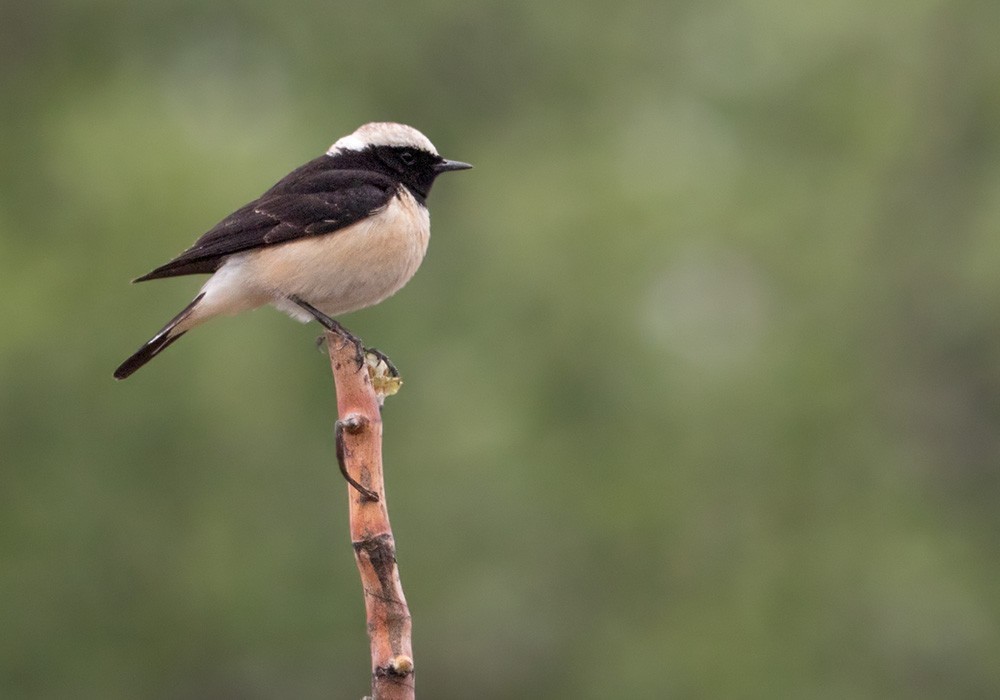Cyprus Wheatear
A species of Wheatears Scientific name : Oenanthe cypriaca Genus : Wheatears
Cyprus Wheatear, A species of Wheatears
Botanical name: Oenanthe cypriaca
Genus: Wheatears
Content
Description General Info
 Photo By Lars Petersson
Photo By Lars Petersson Description
The Cyprus wheatear or Cyprus pied wheatear (Oenanthe cypriaca) is a small, 14–15 cm long passerine bird that was formerly classed as a member of the thrush family Turdidae, but is now more generally considered to be an Old World flycatcher, Muscicapidae. It was formerly treated as a subspecies (race) of pied wheatear but Sluys and van den Berg (1982) argued that the form deserved full species status, on the basis of differences in biometrics and especially song, and the lack of sexual plumage dimorphism in cypriaca. This migratory insectivorous species breeds only in Cyprus, and winters in southern Sudan and Ethiopia. It has been recorded as a vagrant on Heligoland, Germany, This species closely resembles pied wheatear, although it has slightly more black on the tail and back, and on the head. The sexes are similar in appearance, a fact first documented by Christensen (1974). A 2010 study found that Cyprus wheatear differs from pied wheatear in fourteen external morphometric characters. The song is distinctive, and very different from that of pied wheatear, resembling an insect. It consists of a series of high-pitched buzzing bursts. The song-perches utilised by this species are high for a wheatear, typically being 5 to 10 metres above ground. It often breeds in woodland habitats, unlike other wheatears (Oliver 1990 suggested that it occupies the ecological niche used elsewhere in the Western Palearctic by the common redstart). It is the most arboreal species of wheatear in the western palearctic and it uses often aerial sallying and perch-pounce-feeding tactics. Recent work suggest an ecological differentiation between Cyprus wheatear and migrating northern wheatears O. oenanthe and black-eared wheatears O. hispanica melanoleuca. Cyprus wheatear uses more aerial sallying and occupies more forested habitats, but needs a minimum amount of open/bare ground, and a minimum of high bush/tree vegetation (Randler et al. 2009). 
Size
13 cm
Nest Placement
Ground
Feeding Habits
Cyprus Wheatear primarily consumes insects, especially caterpillars, and occasionally feeds small lizards to its nestlings. Cyprus Wheatear's foraging method entails actively hunting for prey.
Habitat
The cyprus Wheatear is found in a wide array of environments, prominently occupying regions characterized by a mix of open areas and vegetation. Typical habitats include natural and cultivated lowlands, pine forest clearings, hills with sparse tree coverage, rocky terrains, and gardens. They also frequent suburban zones and industrial spaces with some greenery. During migration, vegetated wadis with agricultural surroundings are common stopovers, and in winter, open landscapes with occasional shrubbery prevail.
Dite type
Insectivorous
General Info
Feeding Habits
Bird food type

 Photo By Lars Petersson
Photo By Lars Petersson Scientific Classification
Phylum
Chordates Class
Birds Order
Perching birds Family
Old world flycatchers Genus
Wheatears Species
Cyprus Wheatear